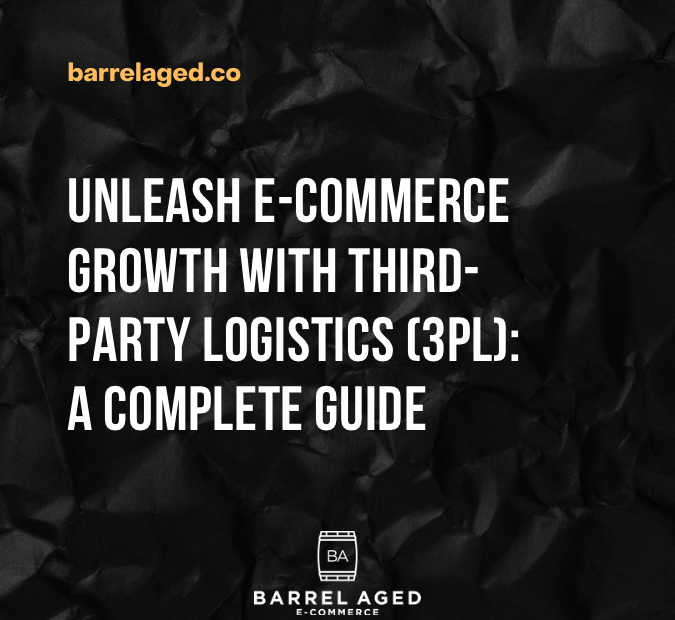Expanding your e-commerce presence is a strategic move to reach a broader audience. However, as your business grows, so do the challenges of managing inventory and fulfillment. If you’re grappling with space constraints or seeking to streamline your operations, a third-party logistics (3PL) service might just be the solution you need.
How 3PL Services Accelerate E-commerce Growth:
Navigating the complexities of e-commerce growth requires efficient logistics management. Here’s how partnering with a 3PL service can propel your business forward:
- Overcoming Space Constraints: Running out of storage space can stifle your business’s potential. With a 3PL provider, you can leverage their warehouse facilities to accommodate your expanding inventory, without the hassle of managing additional storage space.
- Streamlined Fulfillment Processes: Manual order processing and multiple trips to shipping carriers can drain time and resources. 3PL services streamline fulfillment by efficiently picking, packing, and shipping orders on your behalf, saving you valuable time and effort.
- Cost-Effective Shipping Solutions: Shipping costs can eat into your profit margins. By leveraging the shipping volume of 3PL providers, you gain access to discounted rates and optimized shipping solutions, reducing your overall fulfillment expenses.
Understanding Third-Party Logistics (3PL):
Third-party logistics companies specialize in offering a range of services to optimize retail operations. These services include:
- Warehouse Storage: Utilize 3PL warehouses to store your inventory efficiently.
- Shipping Coordination: Seamlessly coordinate shipping logistics to ensure timely delivery of orders.
- Order Fulfillment: From picking and packing to shipping, 3PL providers handle every aspect of order fulfillment.
- Retail Distribution: Distribute your products to various retail channels with ease.
How 3PL Services Work:
The operational process of a 3PL service may vary, but here’s a general overview:
- Inventory Transfer: Send your inventory to the 3PL provider’s warehouse, either from your storage space or directly from manufacturers.
- Inventory Organization: The 3PL receives and organizes your inventory in their warehouse, ensuring efficient storage and retrieval.
- Order Processing: When a customer places an order, either you manually submit it to the 3PL or they receive it automatically via software integration.
- Order Fulfillment: A dedicated team at the 3PL facility picks, packs, and ships the ordered items to customers using local shipping service providers.
Signs That 3PL Might Be Right for You:
Consider partnering with a 3PL provider if you resonate with the following scenarios:
- You’re struggling to keep up with increasing demand and need scalable solutions.
- You prefer focusing on business growth rather than micromanaging inventory and fulfillment processes.
- Managing inventory in-house is becoming cost-prohibitive or logistically challenging.
- You have the financial resources to invest in 3PL services to optimize your operations.
- Expanding your reach by leveraging the 3PL provider’s network of distribution centers aligns with your business strategy.
Factors to Consider When Choosing a 3PL Provider:
Selecting the right 3PL provider is crucial for the success of your e-commerce venture. Here are key factors to consider:
- Shipping and Receiving Options: Ensure the provider offers both full truckload (FTL) and less than truckload (LTL) shipping options to cater to your specific needs.
- Inventory Management Tools: Look for providers with robust inventory management systems that offer real-time visibility and analytics to optimize stock levels.
- Fulfillment Services: Beyond basic order fulfillment, assess whether the provider offers additional services such as custom packaging, kitting, and assembly.
- Data Analytics Capabilities: Choose a 3PL provider with advanced data analytics tools to gain insights into customer behavior, inventory performance, and sales trends.
- Reverse Logistics Support: Verify if the provider offers comprehensive reverse logistics services, including processing returns and restocking inventory.
- Warehouse Locations: Opt for a provider with strategically located warehouses to minimize shipping costs and expedite delivery times.
- Customer Support Quality: Evaluate the level of customer support offered by the provider to ensure seamless communication and problem resolution.
Leveraging Amazon’s 3PL Services:
Amazon offers a suite of 3PL services under Supply Chain by Amazon, including:
- Amazon Global Logistics: Streamline global freight transportation from manufacturers to Amazon fulfillment centers.
- Amazon Partnered Carrier Program: Access discounted shipping rates for small parcel deliveries and truckload shipments within the US.
- Amazon Warehousing and Distribution: Benefit from low-cost bulk storage options and automated inventory replenishment.
- Fulfillment by Amazon (FBA): Outsource order fulfillment to Amazon’s network of fulfillment centers, including pick, pack, and ship services.
- Multi-channel Fulfillment (MCF): Extend Amazon’s fulfillment capabilities to other e-commerce sales channels for faster and cost-effective order fulfillment.
Embracing third-party logistics services is a strategic move to optimize your e-commerce operations and drive growth. Whether you’re a budding entrepreneur or an established retailer, partnering with a reliable 3PL provider can streamline your fulfillment processes, reduce costs, and enhance the customer experience. Explore the diverse range of 3PL solutions available, including those offered by Amazon, to unlock your business’s full potential in the dynamic world of e-commerce.
